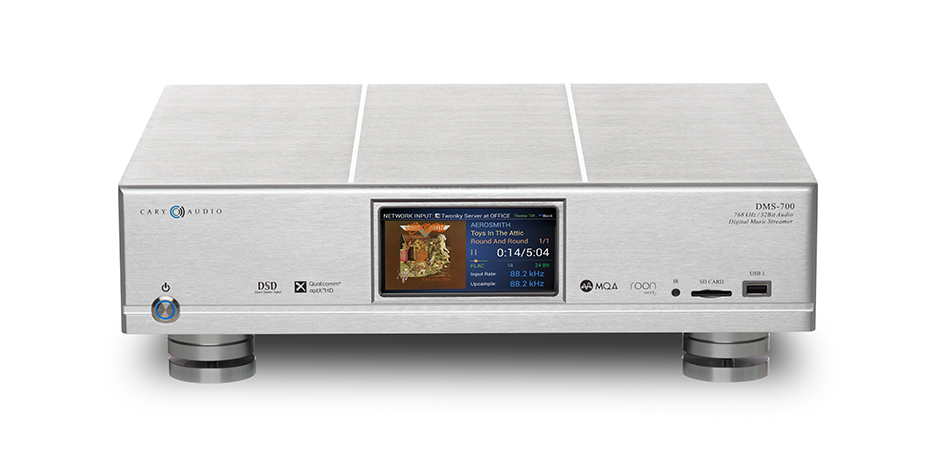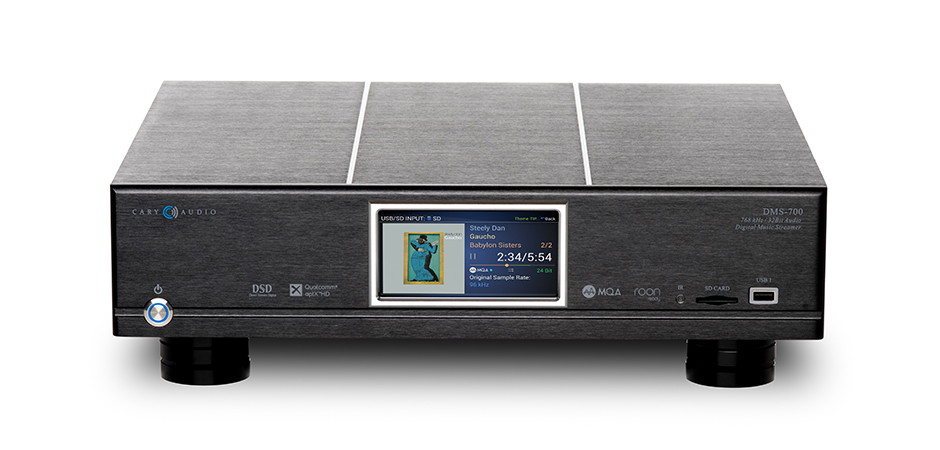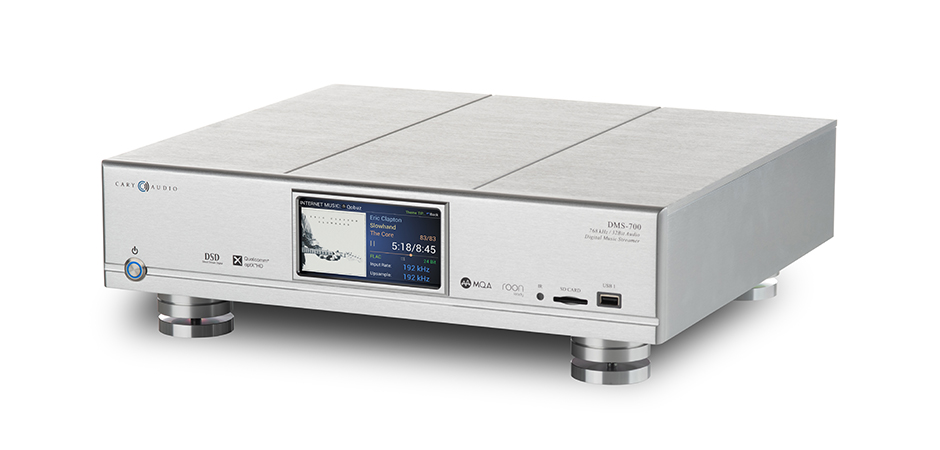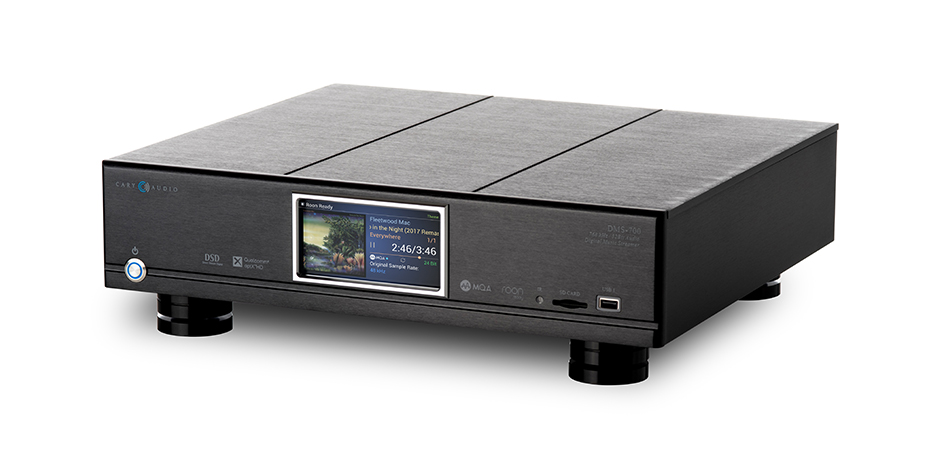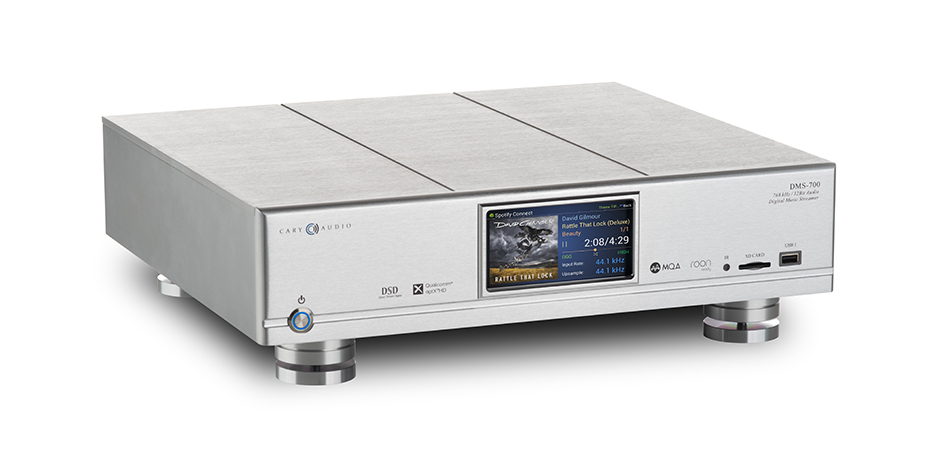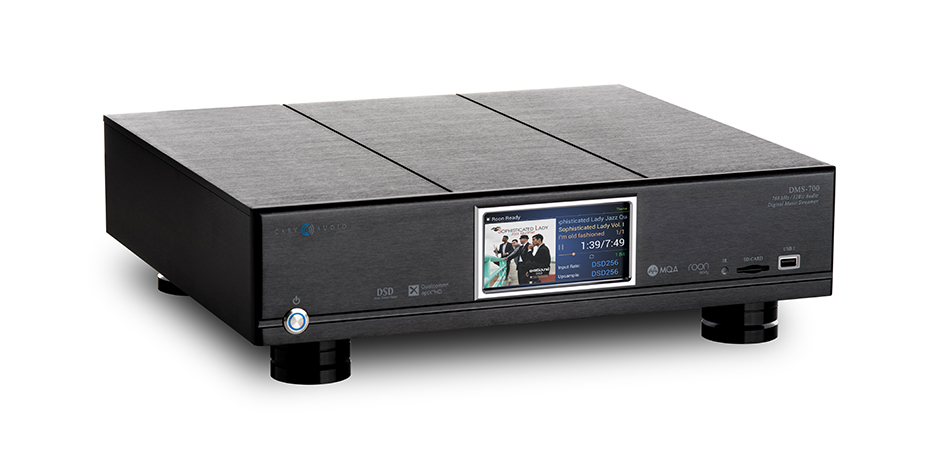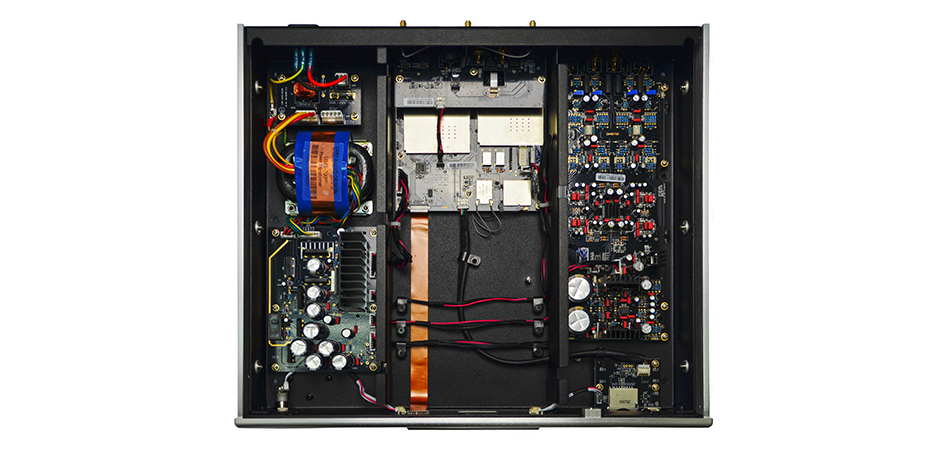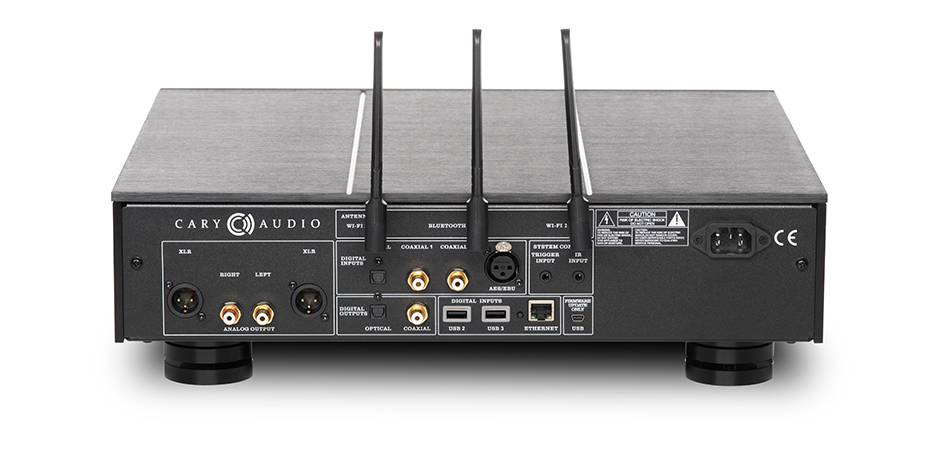ABOUT THE DMS-700 NETWORK AUDIO PLAYER
�Positioned at the heart of our DMS range, the DMS-700 embodies the perfect blend of performance and value. Sharing key components with our top-tier Reference DMS-800 Professional Version, including identical DACs and analog output stages, it offers exceptional audio fidelity that rivals higher-priced alternatives. With its expanded soundstage, nuanced sonic details, and seamless integration of cutting-edge technology, the DMS-700 delivers an immersive listening experience that surpasses expectations.
Equipped with original AKM AK4499EQ DACs and a comprehensive suite of streaming features, including Spotify Connect, TIDAL Connect, and Roon Ready, the DMS-700 ensures versatility and convenience. Its support for PCM & DSD selectable upsampling and optional PCM to DSD conversion, coupled with various connectivity options, makes it the ideal solution for audiophiles seeking uncompromising sound quality. Elevate your listening journey with the DMS-700 and experience the pinnacle of audio performance.

Download the free iOS and Android Control APPS for the DMS-700.
The DMS-700 is Roon Ready. Customers who purchase it will receive a 60-day free subscription to Roon. You can sign up for Roon here.
The following section describes the DMS-700 basic specifications. The specifications are subject to change without notice or obligation.
| Master Clock Jitter | Below measurable levels |
| Digital Sampling Rates (Fs) | 44.1 kHz to 768 kHz |
| Digital Filter | 32-Bit 8x Oversampling Digital Filter |
| Digital/Analog Converters | 1 – 4 channel AK4499EQ for true balanced output |
| BLUETOOTH | CSR Bluetooth v 4.0 with aptX® HD for 24 Bit / 48 kHz high definition audio decoder |
| Analog Filter | 3rd Order Bessel |
| Analog Outputs | Balanced XLR, Single – Ended RCA |
| Digital Outputs | Coaxial, Toslink operating at Sample Frequency (Fs) from 44.1 kHz to 384 kHz, 16 bit to 24 bit, DSD64, DSD128 |
| Digital Inputs | USB x 3, SD Card x 1 BLUETOOTH x1 AES/EBU x1, Coaxial x2, Toslink x1 |
| Digital Input Sample Rate | USB operating at Sample Frequency (Fs) from 44.1 kHz to 705.6 kHz, 16 bit to 32 bit, DSD 64, 128, 256 and 512. BLUETOOTH Sample Frequency (Fs) 48 kHz, 24bit. AES/EBU, Coaxial, Toslink operating at Sample Frequency (Fs) from 44.1 kHz to 384 kHz, 16 bit to 24 bit, DSD64, DSD128 |
| Control | Trigger input 12VDC x1 IR control x1 |
| Communication | Ethernet RJ45 full remote configuration interface Wi-Fi 802.11 b/g/n/ac support MU-MIMO |
| Power Input | Configured at factory for either 110-120 or 220-240 VAC, 50-60 Hz |
| AC Power Requirements | 45 Watts |
| Finish | Custom aluminum chassis and faceplate available in either Silver or Black anodized finish |
| Weight | 28 lbs |
| Dimensions | 3.75″ H x 17.25″ W x 16.25″ D |
AUDIO (LPCM)
| Frequency Range | 2 Hz – 22 kHz (44.1 kHz) |
| Amplitude Linearity | 0.1 dB (20 Hz – 20 kHz) |
| Phase Linearity | 3 degrees (20 Hz – 20 kHz) |
| Dynamic Range | 124 dB (1 kHz) |
| Signal-to-Noise Ratio | 127 dB (1 kHz) |
| Channel Separation | 107 dB (1 kHz) |
| Total Harmonic Distortion | 0.0001% (1 kHz) |
| Audio Output Level | 2.0V RMS (220 Ω output impedance) for Volume at 0.0dB 3.0V RMS (220 Ω output impedance) for Volume at +8.0dB |
| Balanced XLR Output | +/- 2.0V RMS (440 Ω output impedance) for Volume at 0.0dB +/- 3.0V RMS (440 Ω output impedance) for Volume at +8.0dB |
NETWORK, USB, SD CARD PLAYBACK
| Playback Format Supply | .dsf, .dff (DSD64, 128, 256, 512), .aif, .aiff, .alac, .flac, .m4a, .mp4, .wav, .ape, .mp3, .aac, .wma, .ogg, .asf |
| Frequency Range | 2 Hz – 100 kHz |
| Signal System | 16, 20, 24, & 32 bit PCM and 1 bit DSD |
| Sampling Frequency | 44.1 kHz to 384 kHz PCM and 2.822MHz – 22.5792 MHz DSD |
| Dynamic Range | 124 dB |
| DSD System Clock | Frequency 22.5792 MHz |
| Signal-to-Noise Ratio | 127 dB |
| Audio Output Level | 2.0V RMS (220 Ω output impedance) for Volume at 0.0dB 3.0V RMS (220 Ω output impedance) for Volume at +8.0dB |
| Balanced XLR Output | +/- 2.0V RMS (440 Ω output impedance) for Volume at 0.0dB +/- 3.0V RMS (440 Ω output impedance) for Volume at +8.0dB |
SPDIF PLAYBACK; COAXIAL, TOSLINK, AES/EBU (lPCM)
| Frequency Range | 2 Hz – 100 kHz |
| Signal System | 16, 20, and 24 bit |
| Sampling Frequency | 44.1 kHz to 384 kHz PCM, DSD64, DSD128 |
| Dynamic Range | 124 dB |
| System Clock | Frequency 22.5792 MHz |
| Signal-to-Noise Ratio | 127 dB |
| Audio Output Levelb | 2.0V RMS (220 Ω output impedance) for Volume at 0.0dB 3.0V RMS (220 Ω output impedance) for Volume at +8.0dB |
| Balanced XLR Output | +/- 2.0V RMS (440 Ω output impedance) for Volume at 0.0dB +/- 3.0V RMS (440 Ω output impedance) for Volume at +8.0dB |
MQA (Master Quality Authenticated)
MQA is an award-winning British technology that delivers the sound of the original master recording. The master MQA file is fully authenticated and is small enough to stream or download.
Visit mqa.co.uk for more information.
The MQA logo is a trademark of MQA Limited. © MQA Limited 2024
MQA (Master Quality Authenticated)
The DMS-700 includes MQA technology, which enables you to play back MQA audio files and streams, delivering the sound of the original master recording. The DMS-700 LED glows green or blue to indicate that the unit is decoding and playing an MQA stream or file, and denotes provenance to ensure that the sound is identical to that of the source material. It glows blue to indicate it is playing an MQA Studio file, which has either been approved in the studio by the artist/producer or has been verified by the copyright owner.
Roon is the most engaging, enjoyable way to browse your music.
Being RoonReady means that Cary Audio network players transparently discover and connect to Roon, with no network configuration, with bitperfect delivery of audio to your dac.
Together, Roon and Cary Audio deliver the power, flexibility, and performance benefits of networked audio, with the easiest setup and highest reliability available.
Learn more here: www.roonlabs.com/roonready

